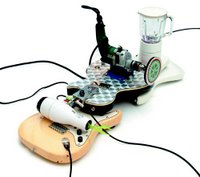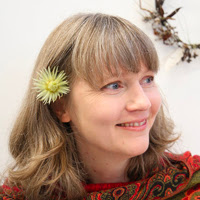
Yelena Vorobyeva and Viktor Vorobyev at Sydney College of the Arts
This installation consisted of a series of photos and objects from Kazakstan in the 1990s. Each photo was a snippet from the bazaars where people (mainly pensioners) would sell things from their homes in order to survive. The motley collections of household contents are shown with a quote from the sellers and a item from each that the artists purchased. The small collections speak eloquently of poverty amongst the elderly and the struggle to survive hard times. The goods are spread out on bits of cardboard and cloth, in some cases over the snow-covered ground. Some of the objects were the sort of things that would be considered worthless in more affluent countries - such as old bras, random bits of crockery and used stuffed toys. Items from the Soviet era are intermingled with cheap Chinese goods in a sort of historical pastiche of changing political and economic systems washing over the area. One struck me in particular - a selection of teeth from various animals, which the seller recommends setting into one's jaw if they match: do-it-yourself false teeth for those without access to dentists. A sobering exhibit that brings into sharp relief the comparative affluence and comfortable circumstances of it's intended audiences.
(Apologies for the poor photos, have had to resort to using phone camera for now due to laptop problems)
John Reynolds at the Art Gallery of New South Wales
My final comment on the Sydney Biennale is reserved for New Zealander John Reynolds 'Cloud', installed at the Art Gallery of New South Wales. The quirky 'New Zealandisms' that make up the work are taken from Harry Orsman's Dictionary of New Zealand English. The words are drawn in silver on a large number of small white canvases spread across the walls of the main foyer of the gallery - a long white 'cloud' of little canvases and words. Being a New Zealander it was a gentle and whimsical reminder of home. I wondered what people unfamiliar with the terms would make of it. The happy convergence of art and language makes for an interesting installation.
The Sydney Biennale has been an interesting and diverse exploration of unfamiliar and familiar artists. I have only managed to catch a small cross-section of the many works on offer, but I am already looking forward to experiencing it again in the future.


